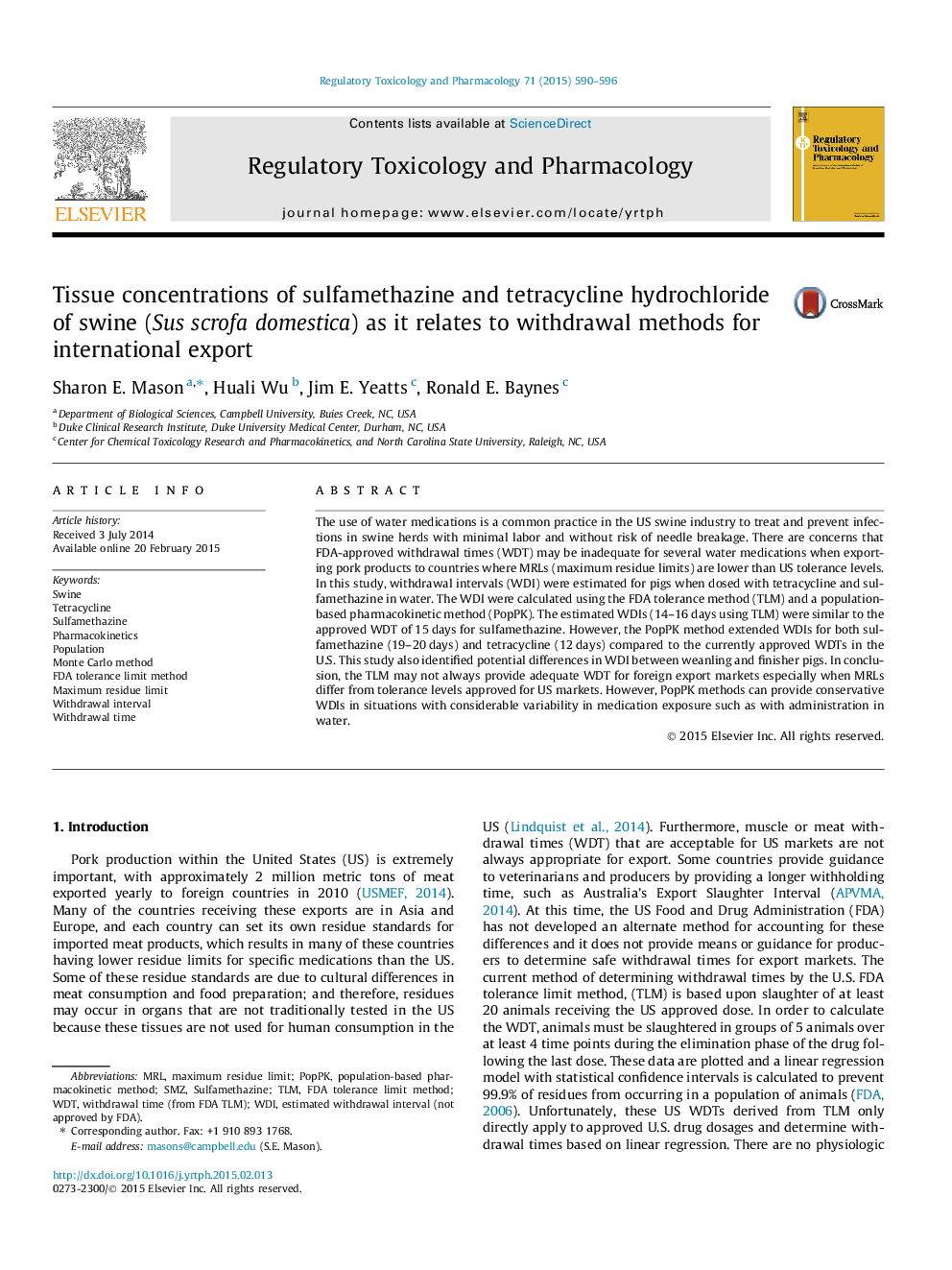| Article ID | Journal | Published Year | Pages | File Type |
|---|---|---|---|---|
| 5856689 | Regulatory Toxicology and Pharmacology | 2015 | 7 Pages |
Abstract
The use of water medications is a common practice in the US swine industry to treat and prevent infections in swine herds with minimal labor and without risk of needle breakage. There are concerns that FDA-approved withdrawal times (WDT) may be inadequate for several water medications when exporting pork products to countries where MRLs (maximum residue limits) are lower than US tolerance levels. In this study, withdrawal intervals (WDI) were estimated for pigs when dosed with tetracycline and sulfamethazine in water. The WDI were calculated using the FDA tolerance method (TLM) and a population-based pharmacokinetic method (PopPK). The estimated WDIs (14-16Â days using TLM) were similar to the approved WDT of 15Â days for sulfamethazine. However, the PopPK method extended WDIs for both sulfamethazine (19-20Â days) and tetracycline (12Â days) compared to the currently approved WDTs in the U.S. This study also identified potential differences in WDI between weanling and finisher pigs. In conclusion, the TLM may not always provide adequate WDT for foreign export markets especially when MRLs differ from tolerance levels approved for US markets. However, PopPK methods can provide conservative WDIs in situations with considerable variability in medication exposure such as with administration in water.
Keywords
Related Topics
Life Sciences
Environmental Science
Health, Toxicology and Mutagenesis
Authors
Sharon E. Mason, Huali Wu, Jim E. Yeatts, Ronald E. Baynes,
